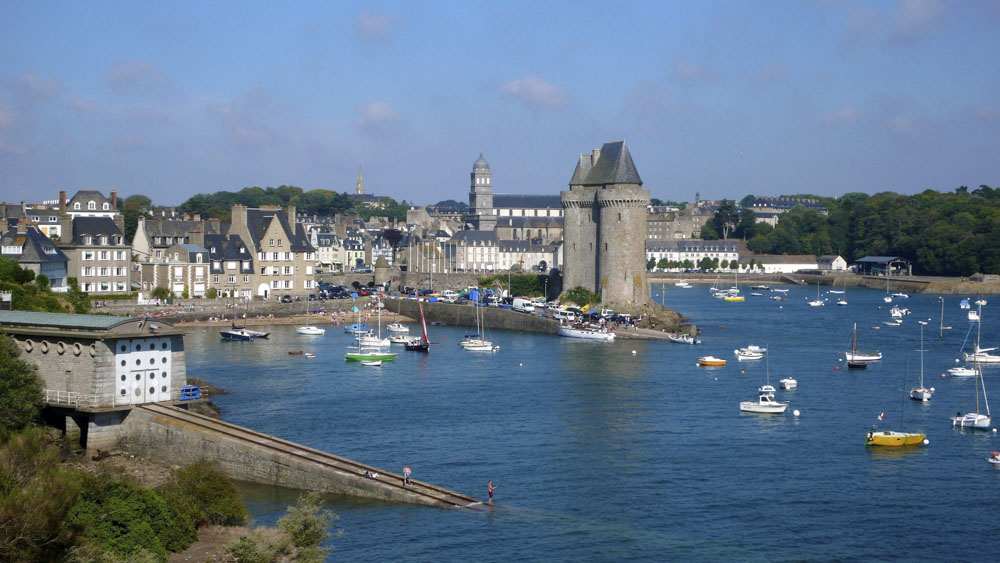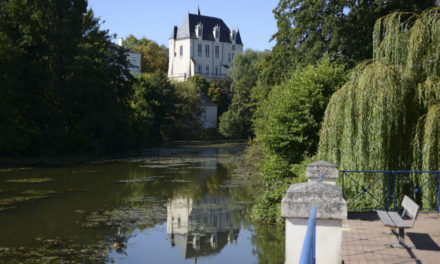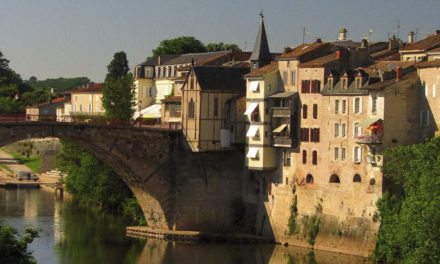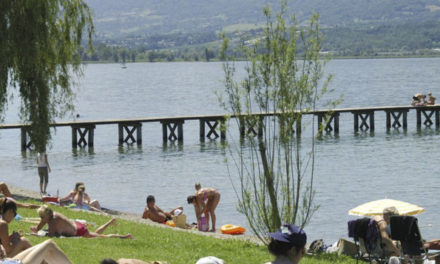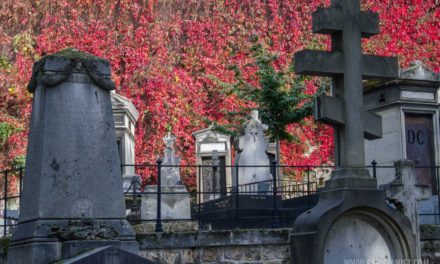The ancient walled city of Saint Malo is located in the department of Ille-et-Vilaine and is the most visited place in Brittany, north western France. Situated on the English Channel, the port has famously been the centre of seafaring adventurers and today still retains a jaunty air with a plethora of sailing boats and the romance of the sea. The ramparts which surround the picturesque streets and shops are a reminder of the town’s glorious past, combining Saint Malo’s rich heritage with the delights of an attractive seaside resort. Heavily damaged during the Second World War, the town has been carefully restored and offers visitors plenty of interesting places to explore and excellent restaurants.
Within the walls of the atmospheric old city, known as La Ville Intra-Muros, the cobbled streets bring you into a busy, lively and very characterful town full of hotels, restaurants, bars and shops. The vast, sandy beaches of the Emerald coast are very popular with families who come to enjoy swimming in environmentally clean waters, sand yachting and wind-surfing.
The resident population of Saint Malo is approximately 53,000 but, during the summer tourist season, this can increase to 200,000 making reservations for accommodation a sensible precaution. Inhabitants of Saint Malo are colloquially called ‘Malouins’.
Book a Hotel in Saint Malo
History
Saint Malo was founded in the 1st century BC, a short distance south of its current location. The fort at Aleth, in what is now St. Servan, was built by Celtic tribesmen to guard the approaches to the Rance River. The Romans further fortified this site but its more recent history traces Saint Malo’s origins to a monastic settlement in the 6th century. Originally, in the Middle Ages, Saint Malo was a fortified island at the mouth of the Rance River, controlling the estuary and the open sea beyond. The rock of Saint Malo was only connected to the mainland by a narrow causeway of sand and it was this natural defence that encouraged the population to move away to escape Viking raids.
Traditionally, the settlers of Saint Malo had an adversarial tradition with the French authorities – and even with its Breton neighbours. From 1490 to 1493 it declared itself to be an independent republic. It became notorious as the home of corsairs, French privateers and pirates making a passage through international waters treacherous. The corsairs not only forced English ships passing up the Channel to pay tribute but also brought wealth from further abroad, including the Americas and especially Canada, by pillaging foreign ships. Worldwide trade brought extravagant prosperity and at one point the Malouin merchants held 25% of all the gold in France.
The 20th century saw the city almost completely destroyed. In late 1944, General Patton’s US 3rd Army, advancing into western France, laid siege to the town and it was only through large scale bombardment that the German army was dislodged. Nearly 30 years of restoration has returned Saint Malo to its former glory and transformed it into one of the most popular tourist destinations in France.
Attractions
To get the full picture of Saint Malo’s past, spend an interesting couple of hours walking along the 12th Century stone ramparts. Looking across the Citadel, you will see several huge town houses representing the old governmental quarter of the city as well as numerous quirky little alleyways. The Privateer’s House (La Demeure de Corsaire), a ship-owner’s town house built in 1725, exhibits objects relating to privateering, weaponry and model ships. Whilst walking through the old town, visit the Cathedral of Saint Vincent which has beautiful stained glass windows and exudes a wonderful feeling of calm amidst the bustling city.
Gazing out to sea you will get an amazing view of the rocky Emerald coast and, at low tide, you can reach the Fort National by foot across the sands. This is a formidable offshore fortress (in fact, two) with substantial dungeons built in 1689 to protect the city.
Saint Malo is France’s largest marina and it is a regular host to The Tall Ships Races bringing back memories of the town’s maritime heritage. The colourful harbour is full of hundreds of boats of all shapes and sizes, several of which are historically interesting. A trip on an old sailing vessel with Compagnie Corsair around the bay is a memorable way to view Saint Malo on its promontory. Restaurants and cafés are plentiful along the beach promenade to the east and this is a good place to relax after a walking tour. Brasserie du Sillon is popular and Les Embrons close by have fantastic views of the sea and offer a wide range of fresh seafood and meat dishes.
The Château de Saint Malo is called the Bastille of the West. Built as a seat of power, it has barrack facades and is now the town hall. Its towers house the Musée de’l’Histoire de Saint Malo. This interesting museum documents the history of the city including maps and testimonies to its past including piracy, colonialism, slave trading and the German occupation during World War II. The Mémorial 39-45, a museum commemorating the Second World War, is located in the bunker of a German anti-air gun complex, built inside the courtyard of an old French fort, which is well worth a visit.
The Great Aquarium Saint Malo is of particular interest for children as is The Labarinthe du Corsaire (an attraction park). For those who love the sea, Saint Malo’s Surf School has tuition for sand-yachting or wind-surfing along the main two mile beach.
Accommodation & Restaurants
Brittany is not renowned for the production of local wines however there are other specialities including Breton beer, Cider, Calvados (apple brandy) and Chouchen which is mead (a very sweet mixture of alcohol and honey). Breton pancakes (Crêpes) are delicious and can be savoury as well as sweet. ‘Kouing Aman’ which is a cake made with butter and sugar, served piping hot, is a local delicacy often made with apple baked in the middle.
Seafood is at its best in Saint Malo and often accompanied by Muscadet, a dry white wine from the nearest vineyard region of Pays de la Loire. It is particularly famous for its succulent oysters from the nearby village of Cancale.
Saint Malo has one of the highest concentration of restaurants in Europe, many of which are concentrated within the Citadel including several crêperies and fish restaurants which are often good quality and relatively inexpensive. Crêperie le Tournesol at 4 Rue des Marins offers a typical Breton menu. A drink in the Bar des Voyageurs at L’Univers Hotel could be a prelude to dinner at Le Chalut, a Michelin rated fish restaurant or, less expensively, at Café Simon or Le Bistro de Jean.
For a first class meal in an old fashioned traditional French restaurant, try La Duchesse Anne which has two Michelin stars. Alternatively, Delaunay at 6 Rue Sainte Barbe serves excellent French cuisine in refined surroundings. Great emphasis is put on the freshest local produce and fine wines.
Most visitors opt for hotels within the Citadel walls as this is also the centre for nightlife and a vibrant selection of bars, restaurants and cafés. Hotel Chateaubriand is in the liveliest square of the same name. The rooms are elegantly furnished and those on the upper floors have sea views over the city walls. A top class restaurant with a terrace for summer dining serves traditional terroir dishes and there is a nautically themed bar.
There are also some good hotels along the seafront towards Parame. The 4 star Hotel Oceania is situated on Sillon beachfront, approximately 200 metres from the Citadel. Hotel Beaufort is on the promenade with a bar and an excellent restaurant overlooking the beach and Bay of Saint Malo. The luxury 5 star Grand Hôtel des Thermes is a relaxing establishment with fine dining in a selection of restaurants and access to the spa facilities next door.
Transport
By ferry: Saint Malo is a terminal for ferry services to Poole, Portsmouth, Weymouth and from the Channel Islands.
By train: Gare de Saint-Malo offers direct TGV services to Rennes, Paris and several regional destinations. Direct trains to Paris take about 3 hours but most travellers take connections from Rennes where there are hourly commuter services which take just under an hour.
By air: The town is served by the Dinard-Pleurtuit-Saint-Malo Airport.
| Title | Address | Description |
|---|---|---|
SAINT MALO | St-Malo, France |

